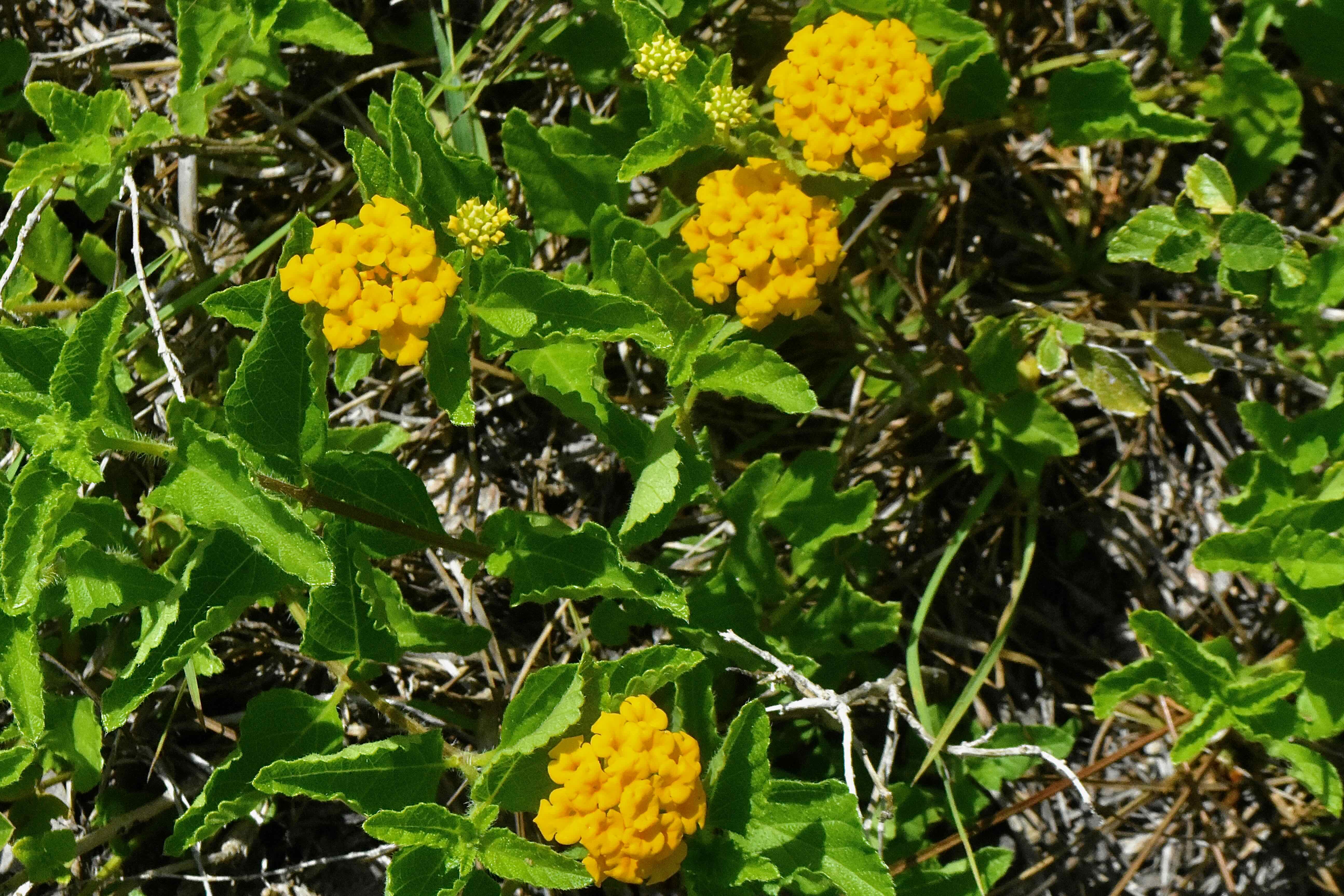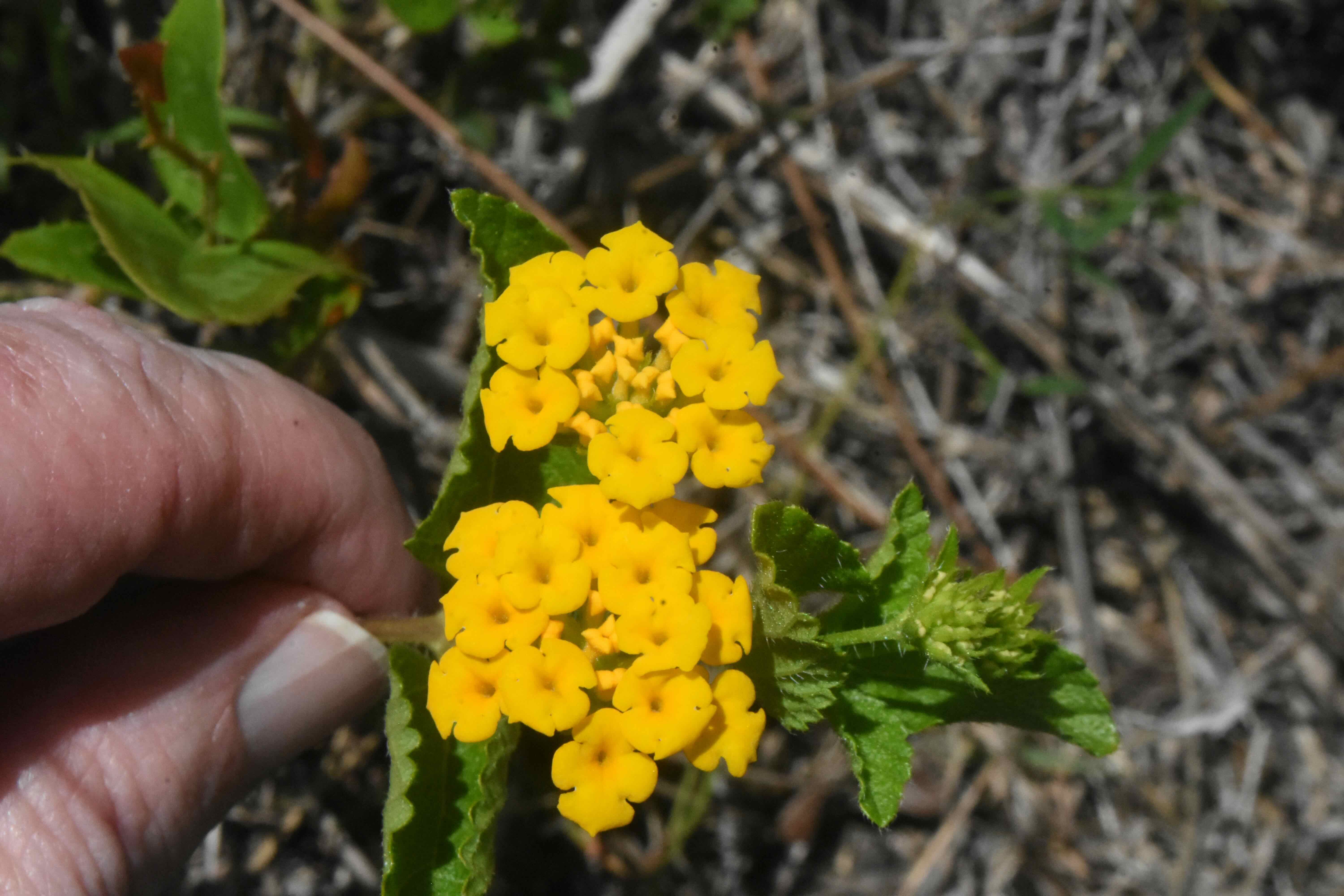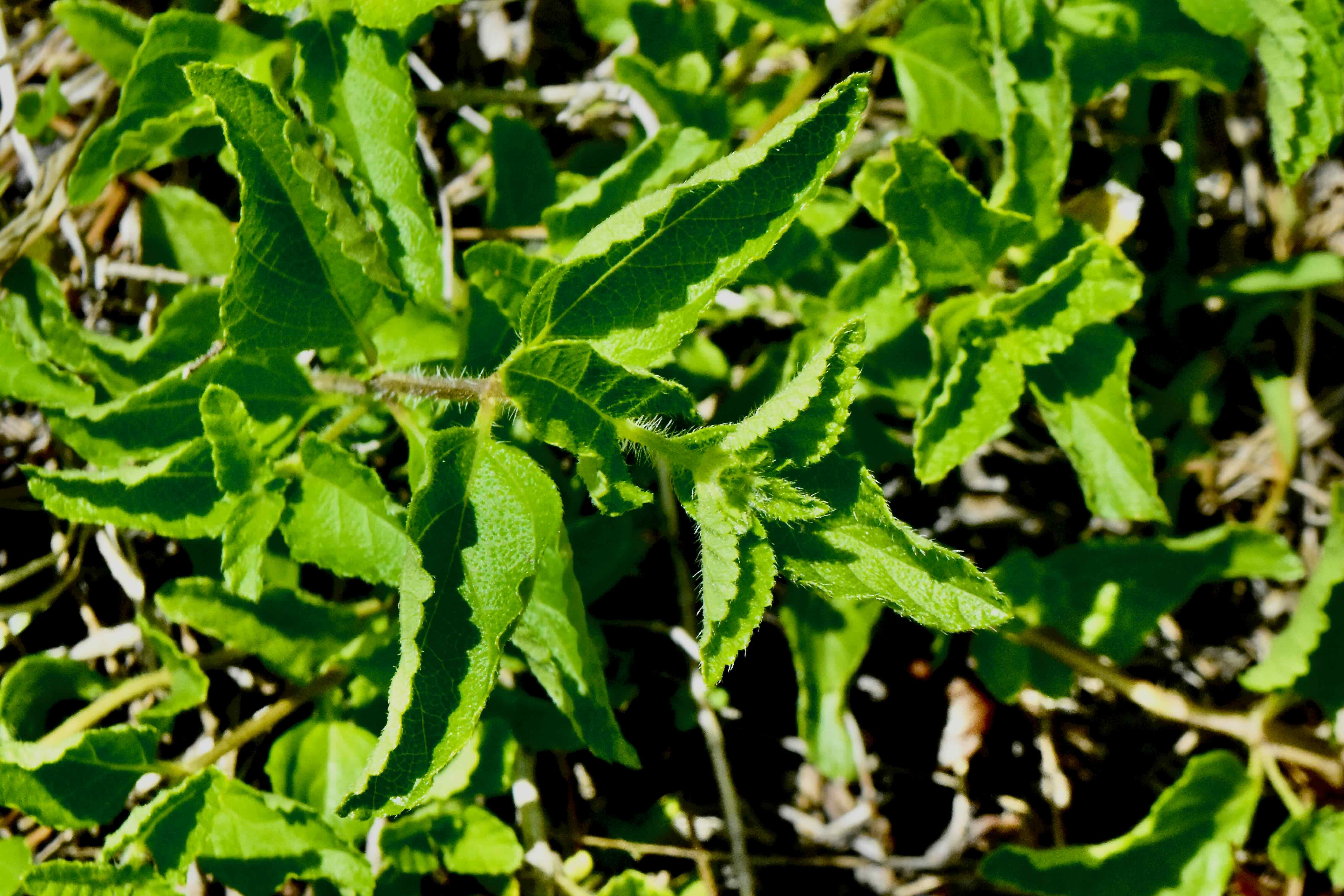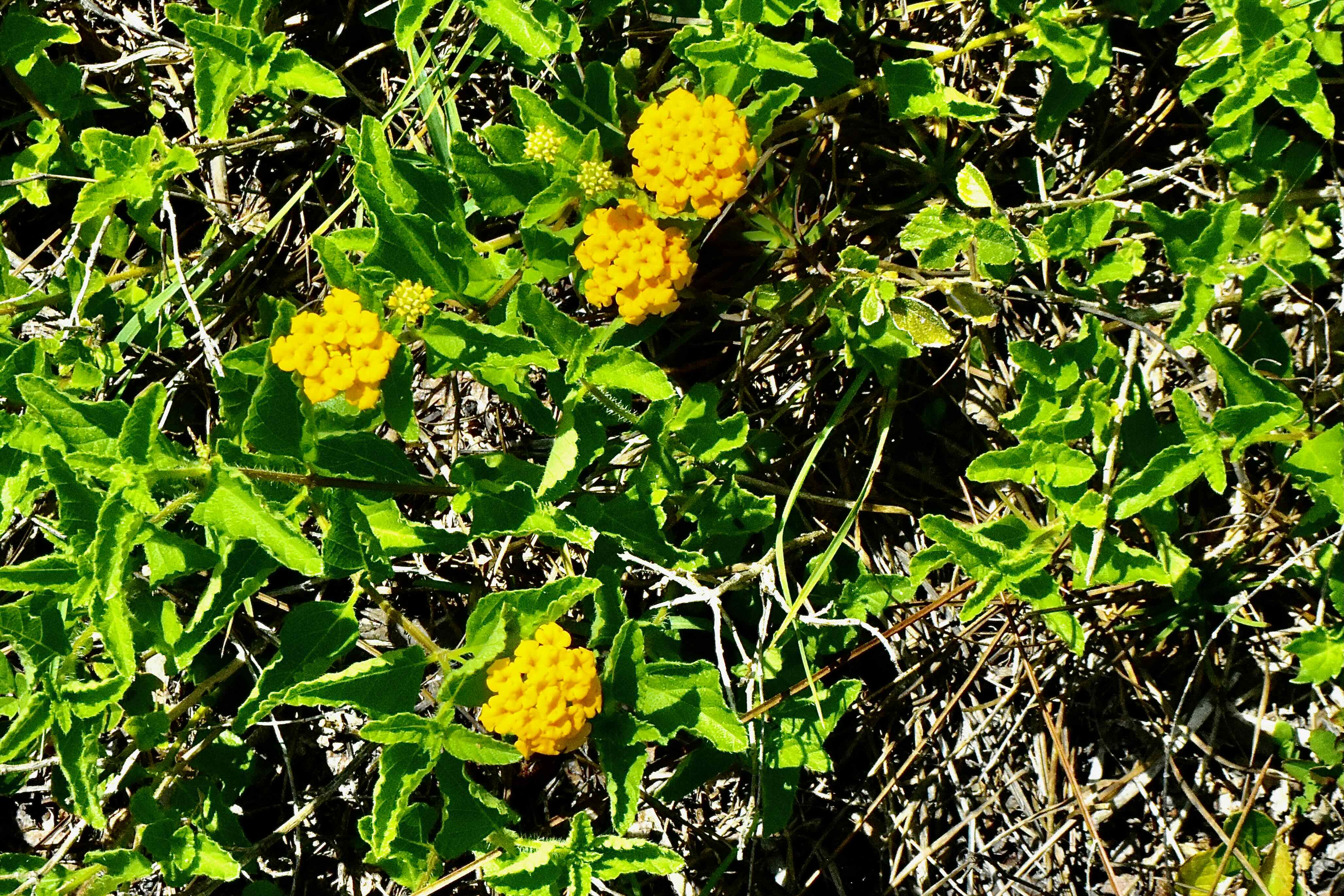
Pineland lantana, photographed at Everglades National Park, Homestead, Miami-Dade County, in May 2025.
Pineland lantana, Lantana depressa is a plant with two strikes against its long-term survival.
The first strike is habitat loss. The second is genetics.
Pineland lantana lives in some of the rarest habitat types in South Florida: the pine-rocklands and marl prairies of extreme southern Miami-Dade County. It is found there and nowhere else on the planet. Much of both have disappeared, either plowed up for farms or bulldozed for subdivisions and shopping centers.
The second threat Pineland lantana faces is more insidious and, as one might expect, a little more complicated. The simplified version is this: Our guy has a non-native cousin called shrub verbena, aka Lantana camara that’s been sold as a landscaping plant in Florida for decades. The problem is it hybridizes with pineland lantana.
Shrub verbena is so widespread that it’s believed to have “swamped” much of pineland lantana’s gene pool. More on the threat it poses later in our story.
But the golden flower clusters of pineland lantana are strikingly beautiful, beautiful enough to attract my eye while driving toward Long Pine Key in Everglades National Park where we photographed the plants on this page. And beauty isn’t a bad thing for a plant to have when facing the possibility of extinction.
So how close is pineland lantana to extinction? Florida lists it as endangered. NatureServe, the Florida Natural Areas Inventory and the Institute for Regional Conservation consider it critically imperiled.
Some botanical basics: There are three subspecies of pineland lantana. There is Lantana depressa var. floridana, Lantana depressa var. sanibelensis and Lantana depressa var. depressa. It is the last of these three on which we are focusing. When we say pineland lantana, it’s var. depressa to which we’re referring.
Pineland lantana is a rather short shrub, perhaps a couple of feet tall that tends to form mounds that are wider than the plant is tall.
Pineland lantana produces inch-wide clusters of 15 to 20 small, golden-yellow flowers that attract a variety of butterflies and moths The flowers turn orange as they age, eventually producing small green berries that turn deep purple as they ripen. Birds and other animals snack on them. Us humans, not so much.
Pineland lantana blooms year-round.
Its leaves are arrow-shaped, wide at the base, narrowing toward the apex, or tip. The margins, or edges, are serrated and the leaves tend to curl up and in on itself. They are arranged opposite each other. Also note from the photographs on this page that both stems and leaves are covered in small hairs.
Pineland lantana is a perennial.
One note as to pineland lantana’s native range: The Atlas of Florida Plants includes Calhoun County up in the northern portion of the state. But it also mentions that the specimen found there almost certainly was a domesticated plant that got into the wild somehow. Native range is determined by plants found growing in the wild that are vouchered, or scientifically verified, specimens.
Now let’s return to genetics. There are five lantana species that have been found growing South Florida per the Institute for Regional Conservation. Three are native, our guy, pineland lantana and wild sage, Lantana involucrata, plus a third, hammock lantana, Lantana canescens that might be extirpated, or locally extinct in the region.
There are two non-natives, the aforementioned shrub verbena, Lantana camara, and trailing lantana, Lantana montevidensis, which is rare, only found in four South Florida parks and preserves, again per the IRC.
Adding to pineland lantana’s problems are several lantana cultivars that look like pineland lantana and even might be marketed as Florida natives although they have uncertain lineages.
Which gets us back to pineland lantana’s super power, it natural beauty. It’s used commonly as a landscaping plant, which is the one hedge it has on extinction.
The Florida Native Plant Society suggests avoiding big-box stores and buying pineland lantana from nurseries that specialize in Florida native plants as one means of ensuring that you’re buying the real thing. Florida native nursery men and women are more likely to be aware of the problem and more knowledgeable about what they’re selling.
Another suggestion: If you’re propagating pineland lantana, do so from cuttings rather than from seed to ensure that the genetics are pure.
For more on lantanas and the problem foreign invaders are causing, read this article by Roger Hammer. And there is this from the Florida Natural Areas Inventory. Pineland lantana is also known as rockland shrubverbena and depressed shrubverbena. It is a member of Verbenaceae, the verbena family.
Everglades National Park



